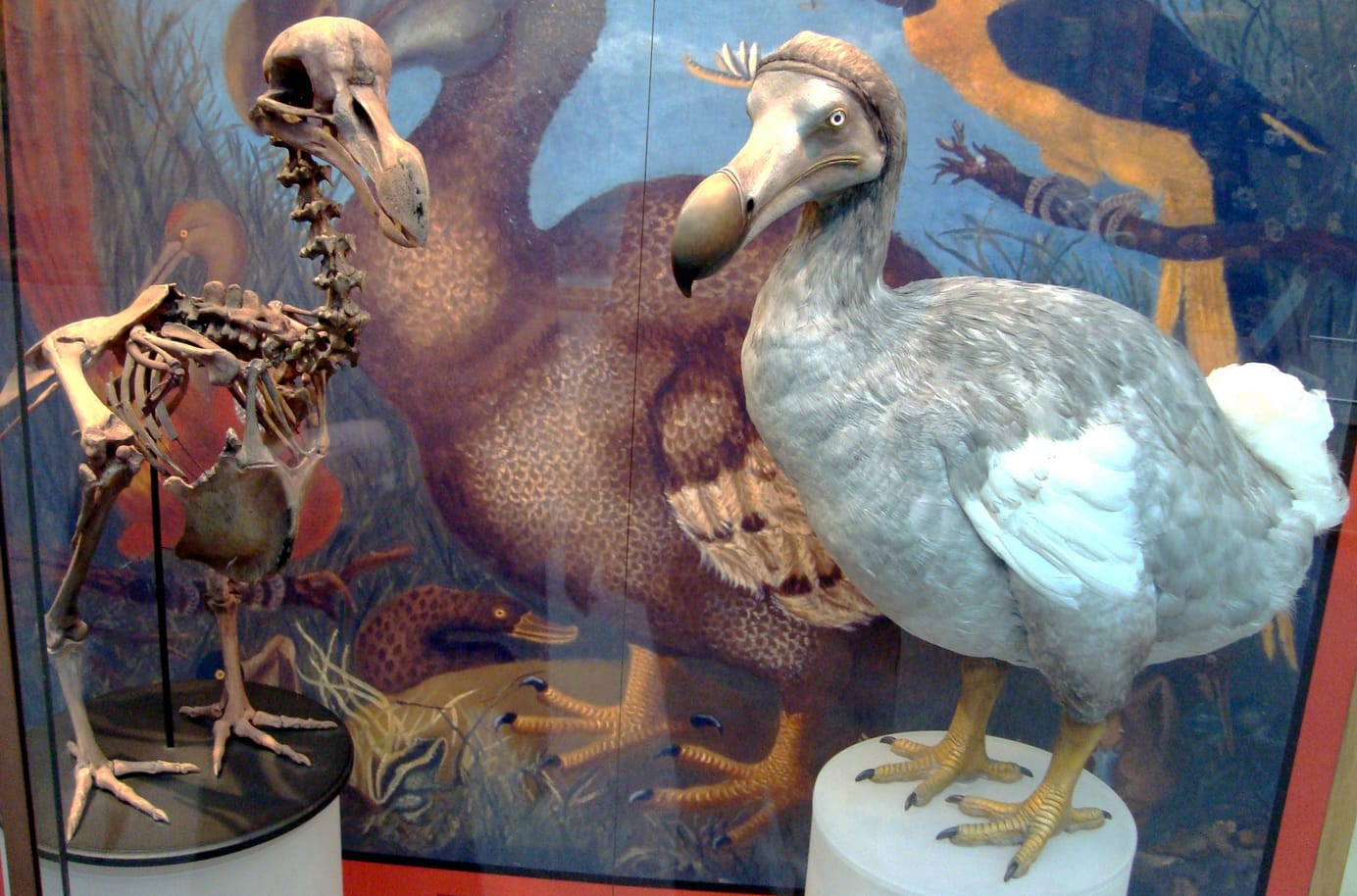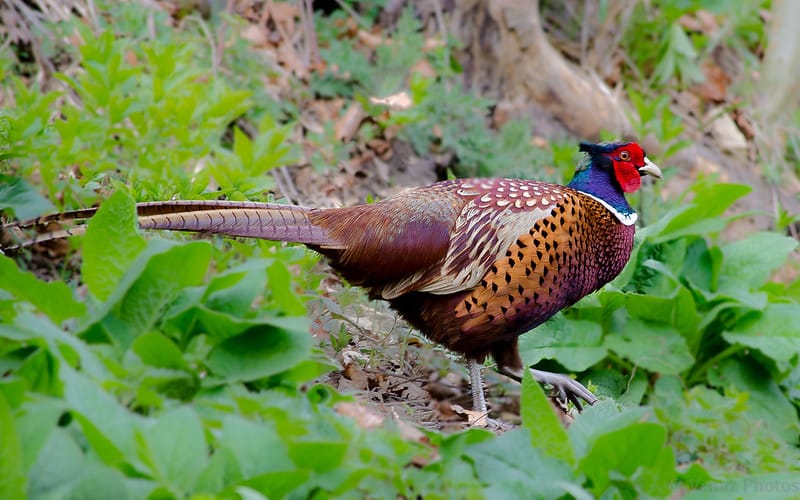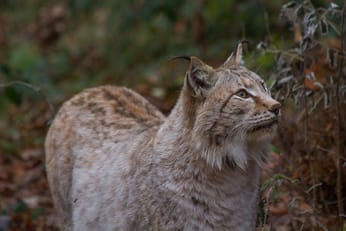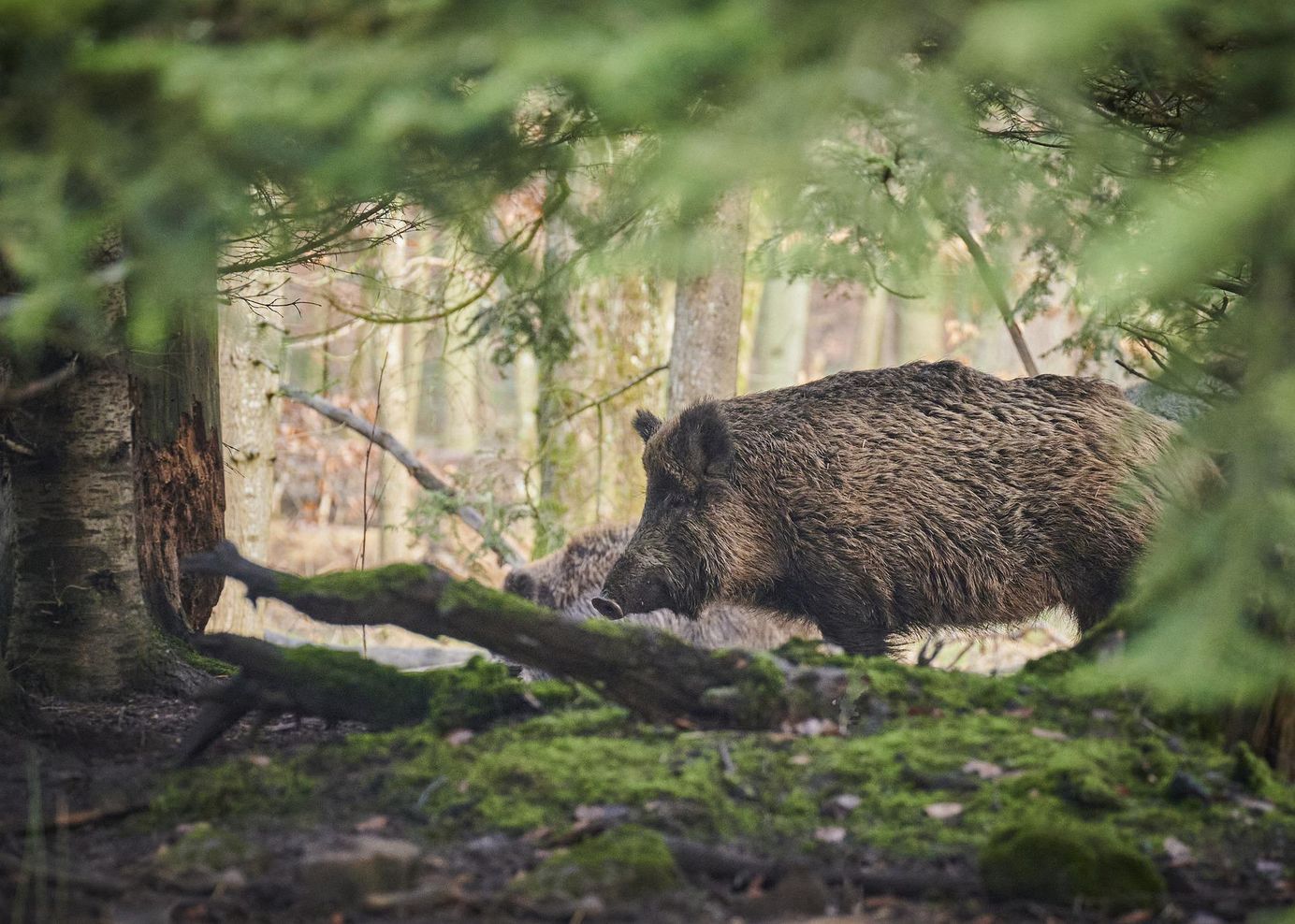
'They just fit': Has the wild boar been over-culled?
Naturalists fear that boar are declining in the Forest of Dean. The controversial question, however, is how many should be there in the first place.
It starts with a worried email in my inbox from a local naturalist, Ed Drewitt.
"I've got to admit I don't think there are many boar out there at the moment," he writes. "I think Forestry England have shot so many, their numbers (in my opinion) are now pretty low, and it has probably made them more wary and nocturnal."
Ed has been leading on-foot wildlife safaris in the Forest of Dean for several years. Wild boar are usually at the top of his clients’ wishlists, and he used to be able to tell them they had a four in five chance of success. But when we first met in November last year to amble along the forest tracks near his home, he’d said that boar numbers seemed to be dropping, and he suspected the Dean held fewer than the estimate of 900 published by Forestry England two months before.
Now Ed is certain: the boar have been over-culled.
Having only moved here last September, and being rather bad at finding boar, I couldn’t trust my own experiences. But I was conscious of all the locals who had told me how easy the boar should be to find in spring, when females begin to spend much more time foraging in the daylight hours to feed their hungry litters. I’d also noticed that, on the Facebook group for local wildlife photographers, the rate of boar photographs had been falling over the past few months.
When I post a question on the group about whether members have seen as many boar as usual, I receive a flurry of replies. The consensus is clear: photographers who spend countless hours in the forest, who have long honed their wildcraft, are also struggling to find boar.
'Too many boar'
Wild boar re-established themselves here in 1999, adding another pin to the blank map of a country that has been bereft of most of its large land animals for centuries.
Thanks to muddy legal waters, the Dean boar were left to their own devices until 2008, when Forestry England (then called the Forestry Commission) began to cull them. The task proved challenging; rangers accustomed to shooting deer found themselves having to rekindle a knowledge lost with the last free-roaming boar in the 1200s. The presence of people in the woods also constrained where stalking or baiting could take place, and the boar themselves grew wiser. As a result, the population kept rising.
When I first visited the area in 2014 to interview residents about their encounters with boar – welcome or not – the estimate stood at 800. By 2018, amid increasing attention from hunt saboteurs carrying out direct action such as toppling shooting towers, the population had supposedly reached 1,600.
Based on what they’re seeing on the ground, most people I’ve spoken to agree there are fewer around now. Yet strife rules when it comes to the questions of how many boar there actually are, and how many of them we should permit to live.
Late last year, I spoke about Forestry England’s management approach with Kevin Stannard, who heads up the agency in the West of England and is based in the Dean. "I love them, don’t get me wrong," he said straight away. "I think the wild boar are like any part of our native flora and fauna. They just fit."
But he was firm about what he felt needed to be done.
"We have too many boar. There is no doubt that, at low densities, boar provide very valuable ecological services in disturbing static ecosystems. The problem is that, with a high density of them, the repeated disturbance of the same piece of ground prevents species from establishing. So if we can get the number down to our target of 400, then we should get the ecological benefits, and fewer negative interactions with people."
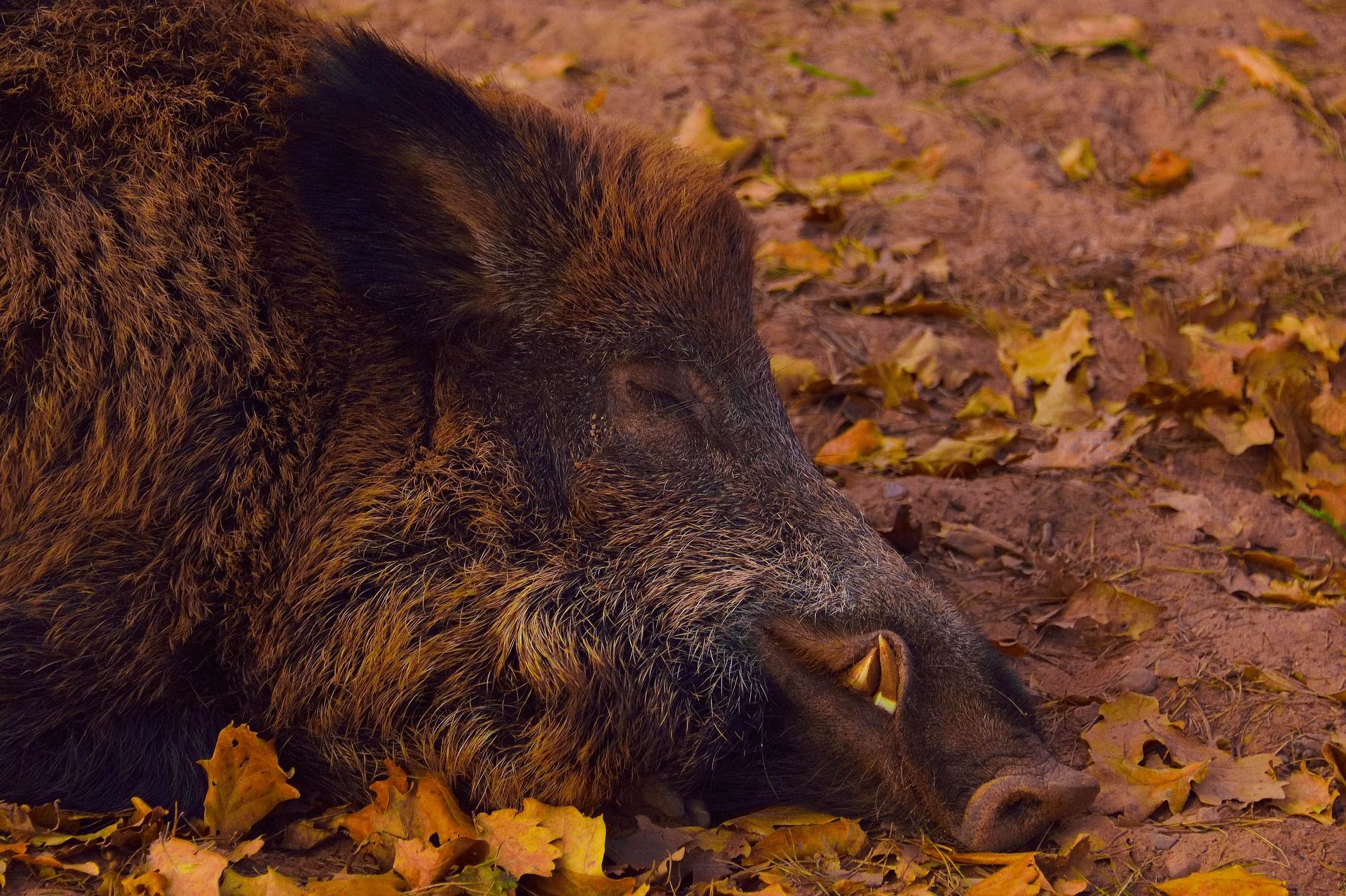
Like beavers, wild boar are powerful ecosystem engineers. By rooting the ground, they alter soil biochemistry, challenge the hegemony of bracken and grasses, and create new opportunities for scrub and wildflowers and bare-ground-loving invertebrates. Their droppings are adored by dung beetles, and can be packed with mycorrhizal fungal spores, some of which germinate better after passage through a large mammalian gut. The wallows they sculpt into the land foster aquatic life, and offer drinking and bathing water to all; a service that will be ever more crucial to wildlife in the decades to come.
It’s fairytale thinking to assume this means the Dean’s population should be left to grow indefinitely. Their landscaping capabilities aside, there are concerns over whether they are eating up vulnerable species such as adders and nightjars. Boar are both omnivorous and opportunistic – although with the average European boar diet being 90% plant-based, and no research having been conducted into what the Dean boar are feeding on, the jury’s still out on how much of a negative impact they might be having on other animals.
That uncertainty aside, boar need checks like any other species. Apart from humans, their traditional hunters – wolves, bears, lynx – are absent, and cars and cold winters (the latter themselves fast becoming an endangered species) can only take so many. But Forestry England’s target of 400 is not primarily driven by ecological concern.
"Let’s be frank here, there is no scientific basis for it," Kevin continued. "There has always been a target of 800 deer here, back to the year 1668. So 400 boar is simply half that number. It’s part historical, it’s part convenience, and it’s partly us going, 'Well, when we think we had 400, we didn’t have a major problem.’"
Kevin was referring to the problem of boar and humans. It’s easy to roll the eyes at complaints of village verges being rooted up; less so when a dog has been tusked or someone is afraid to walk the forest paths they’ve always known and loved. British people do not, in the words of writer and conservationist Hugh Webster, have ‘coping mechanisms’ for troublesome creatures like boar (yet).
From the past highs of headlines like ‘Wild boar bit part of my finger off’, reports of conflict seem to have abated in the last two years or so.
Both the rates of news coverage and road traffic accidents involving the animals can be seen as crude proxies for their numbers, alongside Forestry England’s official method for estimating the population size. As described in annually published census reports, each year in early spring, rangers peer through thermal imaging cameras to count the boar present across 80 km of Forestry England land.
This misses out 30 km of privately-owned woodland, as well as land beyond the forest borders, and Kevin suspects there are more boar than the survey finds. However, he emphasised that "the value of the survey is that by using the same technique consistently over time, we can map the population trends. And that is more important than the actual figure."
But by the 2021 report’s own admission, the margin of error means there may be as many as 1,400 boar, or as little as 600. Some of those who I’ve spoken to, Ed included, fear there are even fewer. It is very difficult to know if and how often individual boar have been duplicated during the annual count, how many have been missed, and how many are being shot on private land around the Dean – though the intensity of this legal yet unregulated shooting is thought to be enough to have more or less prevented the boar from dispersing into Wales or further into the English countryside.
It’s also worth bearing in mind that, while the boar are counted only once a year, they are shot all year round (although sows with dependent young are left alone). In the period 2019/20, rangers killed a thousand of them – more than double the figure of the previous cull period.
Now an inevitable question is: could we lose boar from the Forest of Dean?
It has already happened in Devon and Dorset. It may also be happening in Kent and East Sussex, the one-time stronghold of boar in the UK. They are outnumbered by the guns.
It’s less likely that this will happen in the Dean. It offers a protective core of forest that those other places do not, while the irony of successful culling is that as the number of boar falls, more and more effort must go into tracking down the survivors.
Kevin Stannard emphasised to me that it isn’t Forestry England’s intention to kill them all. Due to the naturally high reproductive rate of wild boar, the Dean population would only need a brief respite to recover to former numbers.
What is more concerning than the possibility of extermination is the loss of genetic diversity. Like all other boar in the UK, the Dean ones descend from a small founder population. African Swine Fever will reach the UK sooner or later, and other diseases will be waiting in the wings for as long as pigs continue to be factory-farmed across the world. Not the best of times for genes to be draining out of the pool.
Forest families
It’s easy to think the boar simply as numbers, ecosystem components, and gene repositories. Yet the least we can do is recognise them as sentient beings, who are clearly aware from their increasing elusiveness that they are being intensively hunted, and who must feel distress – even their own kind of heartbreak? – when fellow boar they may have known all their lives are suddenly gone.
Female boar form matriarchal groups, usually with relatives; they are mothers, daughters, sisters, cousins, aunts, and more. Males live as lone rangers, but in early adulthood they may form bachelor groups. My trail camera has been picking up one such group over the last few months, and I’ve taken to calling them the Boys for their laddish night-time antics.
I fear for them.
While some people despise the boar, for others, they’ve brought new joy and thrill to life. To me, every glimpse in daylight and every sudden snort in the night is a privilege.
But I wonder: are we expecting more than our due? There is an argument to be made that anyone going out into the Forest of Dean should not expect a good chance of seeing boar; that these animals should have nearly the same mystical aura as the pine martens that were reintroduced in 2019 and are as easily seen as winning Euromillions. The boar don’t want to interact with us. Most of my encounters have lasted less than ten seconds.
The Forest of Dean presents an awkward case study of the reality of living with a reintroduced species. But it isn’t the only show in town. Take Galloway in southern Scotland, where boar are expanding with far less fanfare. Local author and farmer Patrick Laurie has written that "most local people have no idea they’re here, and many will flatly deny it".
The Galloway shooting community is, by comparison, very aware and very enthusiastic about this most unusual and challenging quarry. And perhaps that makes them the boar’s greatest ally. By placing brakes on their population growth, and keeping them wary, it may be that the shooters have bought them time; time in which enough people in the United Kingdom might choose to embrace the return of species capable of generating so much other life – including the ones that take a little more effort to live with.
If culling in the Forest of Dean thins the population to the point that conflicts with humans become few and far between – as Forestry England intends – then the heartache I share with Ed and others, and the distress of the boar who lose kith and kin, may be the bitter compromise that’s needed right now.
It’s been said that the hitherto “failure” to control boar in the Dean is one of the major obstacles to considering any official reintroduction of them to the UK. What happens here will help to set the course of rewilding in this country for decades to come. There is nothing else like a boar among our existing wildlife; if we shy away from them now, we hobble the prospects of large-scale restoration of the ecosystems to which they belong.
I hate to think of the remaining Dean boar creeping through the shadows, hearts thudding, fear always at their backs. But I would rather that, than not have them here at all.
Subscribe to our newsletter
Members receive our premium weekly digest of nature news from across Britain.
Comments
Sign in or become a Inkcap Journal member to join the conversation.
Just enter your email below to get a log in link.

